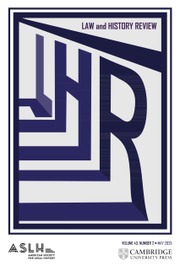The canon law of the medieval church does not enjoy an enviable reputation in its treatment of religious dissent. Heretics faced what F. W. Maitland once called “the everlasting bonfire” (History of English Law, vol. 2, 655). Sir John Baker stigmatized the church's system as including the prosecution of dissenters “without telling them the case against them” (“Magna Carta and Personal Liberty,” 88). In his long and active career as a student of the subject, Professor Kelly has sought to moderate, even to reverse, these judgments. He does so by looking “with new eyes on the inquisitorial system as it was applied in England” (424). This has led him to describe a series of English heresy trials, beginning with the suppression of the Templars in the early fourteenth century and ending with the treatment of dissenters during the Reformation era in the sixteenth. His contention is that, when carefully considered, the English church's treatment of men and women suspected of heresy does not deserve harsh and one-sided criticism. Given the nature of medieval religious assumptions, the English bishops actually deserve something like praise. They commonly acted by “cajolement rather than intimidation” (339) in dealing with mistaken belief.
The book's presentation of this theme proceeds methodically, taking each instance of suspected heresy in chronological order and providing detailed accounts of the process used to initiate and then to proceed against those suspected of holding unorthodox views. This makes for a certain amount of repetition, but also a satisfying completeness. A theme of English prudence also runs throughout these accounts. It was the norm and it mattered. The author contends (unconvincingly) that English defendants in heresy trials were represented by professional proctors and advocates. He also argues (more convincingly) that English prosecutors normally acted patiently with suspected heretics in order “to reconcile them to the faith of the universal church” (339). That restraint had important consequences. Of course it does not mean that the author favors its revival. Who does? It simply calls for a balanced view of his subject's history. Given the medieval attitude to the importance of religious belief, he finds that the English bishops acted with circumspection, even charity, and that they did so to a much greater extent than has so often been assumed.
For students of the history of the canon law's application in England (of whom the reviewer is one), this book has several valuable characteristics. Relative completeness is one. Clarity of exposition is another. A third will be useful to commentators who have fixed their attention upon the manuscript records of England's diocesan courts. They contain very few cases of disciplinary actions brought against alleged heretics. Not none, but very few. And some of the cases that do appear among consistory court records turn out to have dealt with relatively trivial matters, such as the possession of “suspect books” or the expression of contempt for the clergy. With few exceptions Kelly's research does not extend to these routine records. He has concentrated instead on what is found in episcopal registers and contemporary collections of documents specially prepared to deal with suspected heretics. In them, heresy prosecutions appear more frequent and more serious. They are thus particularly telling of the attitudes of the English bishops, and from that perspective, one sees that they regarded heresy as a greater problem than the scanty evidence in diocesan act books suggests. Heresy was too serious a subject, it appears, to be left to the flabby procedures of England's consistory courts.
An additional contribution to the historical record is the author's comparison of the heresy prosecutions in England with those common in France. The author contrasts the English treatment of suspected heretics with that across the Channel, where the torture of men and women suspected of heretical belief was routinely used to secure confessions. Such usage was rare in England. This comparison is interesting and also valuable in advancing the comparative dimension of canon law's history. The traditional view has been to suppose that the compilation of the Corpus iuris canonici, beginning with Gratian's Decretum and advanced by the collection and adoption of papal decretals in the Liber extra, meant that the medieval church was regulated by what amounted to a legal code—one that was everywhere the same. Recent research has challenged this view. Indeed something like the opposite has been uncovered: the medieval canon law actually admitted of considerable variation in practice. The theme of canonical diversity is supported by this work. English heresy prosecutions look quite different when one compares them with those in France. Only the latter fully deserve the strictures of historians like F. W. Maitland and Sir John Baker.


